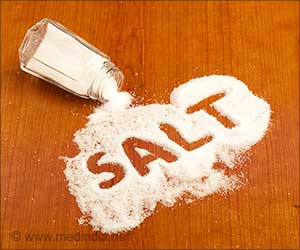
He added: "There is also still a large debate on the optimal target BP level for older adults with hypertension, especially concerning whether systolic BP reduction below 140 mmHg is beneficial and safe. Experts have emphasised that very limited data exist to make definitive recommendations on how low we should reduce BP in older patients, and that data are lacking on the effects of hypertensive therapy in this group of patients." The aim of the current meta-analysis was to investigate the effect of hypertension therapy on BP, and CV and mortality outcomes in patients over the age of 65 years. The safety of BP lowering in older adults was also analysed. The study was performed within the Lipid and Blood Pressure Meta-analysis Collaboration (LBPMC) Group
The researchers looked at data published during 1966 to 2013 on Scopus, PubMed, Web of Science, and the Cochrane Central Register of randomised controlled trials (RCTs) for appropriate studies. They included 11 RCTs with 40 325 hypertensive older patients randomised to receive either antihypertensive drugs or placebo.
They found that BP lowering therapy was associated with a significant reduction in systolic BP (-12.43 mmHg, 95% confidence interval [CI]: -21.07 to -3.79; p=0.005) and diastolic BP (-5.06 mmHg, 95%CI: -9.21 to -0.92; p=0.02).
It was also associated with a significant reduction in all-cause mortality rate by 13% (relative risk [RR] 0.87, 95%CI: 0.81-0.93; p<0.0001), the risk of death from all-cardiac causes by 18% (0.82, 95%CI: 0.73-0.9; p=0.002), CV events by 21% (0.79, 95%CI: 0.73-0.87; p<0.0001), and stroke by 30% (0.70, 95%CI: 0.63-0.77, p<0.0001), including fatal stroke by 39% (0.61, 95%CI: 0.45-0.83; p=0.0015).
There was no significant relation between BP lowering in older adults and the risk of hospitalisations due to angina pectoris (RR 1.13, 95%CI: 0.9-1.41; p>0.05) or heart failure (0.95, 95%CI: 0.76-1.18; p>0.05). However an association between BP lowering and the risk of falls was observed (1.21, 95%CI: 1.05-1.44; p<0.05). Dr Ostrowski said: "Antihypertensive therapy in older adults is very effective and should be considered in all patients over 65 years of age with hypertension, as it significantly reduces the risk of CV events, strokes, and mortality. All patients should be made aware of the large benefits of this therapy." He added: "There are still very limited data on possible complications associated with BP lowering in this group of patients, especially the risk of falls which needs to be investigated further. Therefore physicians must remember that in older patients BP therapy should be individualised, with BP goals adapted to individual tolerability. Within the LBPMC Group we are now conducting a second meta-analysis to answer the question of optimal BP goals in older adults."
Advertisement
Source-Eurekalert












